|
navigation
consulting
services
training
services
specials
reading
material
resources
|
download this page 
lean management: foreword
Lean Management is primarily an Industrial and Organisational philosophy.
It all started in the era of Just in Time (more ») and the Toyota Production System (more »); it all started in the Manufacturing Industry.
That's when TPM - Total Productive Maintenance (more »),
the 5S methodology (more »),
Flow Production (more »),
One-Piece Flow,
Cell Manufacturing (more »),
the Kanban Method (more »),
Poka-Yoke (more »),
Total Quality Management (more »),
Kaizen,
Total Employee Involvement (more ») and all other allied disciplines were developed.
It started in order to increase competitiveness through Manufacturing performance. Japan, where it all started, succeeded gloriously in this regard.
The Western Industry, slowly but surely, followed the Japanese approach, perfected (and "westernalised") the Japanese approach, and Lean Manufacturing (more ») was created ('90s).
Having noticed the benefits achieved through Lean in the Manufacturing Industry, also the Project/Construction Industry copied/pasted/adapted lean approaches, transforming the classical but well-dated Project Management discipline into Lean Project Management (more ») and Lean Construction Management (as well as Lean Contract Management) (early 2000...).
Simultaneously, many Consultants and Industry experts started understanding the power and benefits of Lean, realised that the ultimate factor making the difference between the "traditional" and the "lean" approach was THINKING (as only through innovative thinking could lean principles be deployed in different industrial sectors), and created the terminology Lean Thinking (more ») as global approach to lean transformation.
Lean Thinking was just a bit later (from +-2005....) applied also to the Service Sector, generating lean disciplines such as Lean Process Management, Lean Process Engineering and several others.
Today, we consider Lean Management as the big umbrella under which all lean disciplines and methodologies applied to various Business/Industrial Sectors fall.
In conclusion, the Lean approach has changed the overall operational and strategic approach in all Business/Industry sectors (Private and Public). Why?
Because there was a need for it. Why?
Because the World had changed....
lean management: the origins
Business People, People in Industry!
The World has changed!! Dramatically! Irreversibly! A drastic change.....
What has changed?
Everything: the world has changed from an economical, financial, social, technological, commercial..... etc. point of view.... ALL has changed: a real, solid change....
When did it change?
No-one knows.... in fact, the world has always been changing..... but slowly, gradually.... until the speed and the acceleration of change increased drastically.... and when did it happen? Once again, nobody can say.... all they say - hilariously - is that most probably, when the change took place, it was at about 2:00 or 3:00 am in the night.... and everybody was fast asleep at that time, so the change went un-noticed.....
In the next day, most people - few exceptions - woke up as usual: "...hah, another day, things as usual, business as usual....."
But it wasn't so anymore.....
Let's correlate this phenomenon of "change" to Industry and Businesses performance.
How have they reacted to change? Most of them: little - or none. Some of them: considerably. The first in the classroom: brilliantly. But they are, generally speaking, the exception....
Most Businesses, Organisations (Private and Public), and Industry in general are still acting today according to old principles, approaches, rules.... and even dogmas, that should be considered obsolete. Instead, they are still alive and kicking.
If you can think back 50, 40 and even 30 years ago, things were really different: the world was relatively "stable", "predictable", almost "static" - one could see horizons very far away.... - Organisations used to carry out "long-term" (10 years and even 20-30 years) "strategic planning" projects..... and they would even implement such projects (with all necessary touch-ups, obviously....).
And 30 years ago? Turbulence was starting: the market was opulent but well saturated.... competing and succeeding was becoming harder and harder.....
And 20 years ago? Even more turbulence, fierce competitiveness, harder and harder....
And 10 years ago? Tough, tough, tough...... a fight for survival.....
And today?????
And the next year????
And the next 5 - 10 - 20 years?????
Possibly, no-one knows....
The only thing we know - and possibly more and more people in Industry start realising it - is that we cannot carry on fighting with obsolete guns and ammunitions....
Over the last 50 years, in order to increase fighting power, an extraordinary number of disciplines and techniques have been invented by Consultants, pipe-smoking University Professors, Industry Experts, and the like.
The aim: increase operational and strategic performance through a number of initiatives directed to make people in industry perform better, more efficiently and more effectively, as well as to improve certain specific areas (for instance: the Quality "domain").
To mention just a few:
Management by Objectives - Effective Leadership - Motivational Talks - Diversification - Z Theory - Situational Leadership - Effective Communication - Zero-based-Budgeting - Decentralisation - Team Building - Self-Directed Work Groups - Management by Exception - Dale Carnegie techniques - Interpersonal Skills - Quality Circles - Search for Excellence - Restructuring - Interactive Management - Portfolio Management - Matrix Organisational Structure - Quality Control - Quality Assurance - ISO 9000 - 6 Sigma..... and even One-Minute Managing......
And the results?
Well, let's be honest, all of them are great disciplines, and all of them (including the famous "One Minute Manager" ) have somehow contributed to increase some aspects of organisational performance. But generally: localised - or "per department" - or marginally - or.....
In other words, they have contributed to improve (actually: to organise in a better, structured fashion) "some" aspects or parameters of performance.....
However, although most or many of them were intended to address ALL aspects of performance, in their practical use the effect has been to improve only some area, be it the Human Resources kingdom, or the Quality area, or the co-ordination of inter-functional management, or....
But: overall organisational performance has generally improved only marginally through adopting - even by the book - those disciplines.....
In certain cases, improvement has not only been marginal or localised, but even "spurious" (i.e. one or some department functioning better, but overall output/performance little or no improvement).....
Why?
Because none of those excellent Disciplines has actually aimed at touching or reviewing the ultimate core of the organisational performance: the Organisation's "DNA"!
The fact is that:
.... we have gone into the new millennium with styles and approaches to overall organisational performance conceived long time ago (well over two centuries) by Adam Smith (the rather famous Division of Labour principle) and perfected during the last century (by Frederick Taylor with his Scientific Management System and - most intriguing - by Unions all over the world, with their aseptic and almost "freezing" approach to personnel performance....
Such style and approaches - perhaps adequate until the mid '90s - are, unfortunately, no longer suited to face the tough challenges of the years ahead....
ADAM SMITH
 Adam Smith was a Scottish economist, philosopher and author as well as a moral philosopher, a pioneer of political economy and a key figure during the Scottish Enlightenment, also known as ''The Father of Economics'' or ''The Father of Capitalism''. (Wikipedia)
Adam Smith was a Scottish economist, philosopher and author as well as a moral philosopher, a pioneer of political economy and a key figure during the Scottish Enlightenment, also known as ''The Father of Economics'' or ''The Father of Capitalism''. (Wikipedia)
Smith wrote two classic works, The Theory of Moral Sentiments (1759) and An Inquiry into the Nature and Causes of the Wealth of Nations (1776). The latter, often abbreviated as The Wealth of Nations, is considered his "magnum opus" and the first modern work of economics. (Wikipedia)
The Wealth of Nations is really worth to read (just Google-search for it and you will find the full text).
Smith was a real genius. In a period of time in which there was no industry at all (but only craftsmen), Smith visualised that the future wealth of all nations would come from industry!
And he went one step further: through the rather famous example of the "pins factory" Smith explained in clear terms how industry-to-come should be organised operationally!
Smith explained that a work process - such as that of fabricating "tailor pins" - should be subdivided in a number of single, elementary tasks (or steps), and one person (one labourer) should be assigned to each individual task that he would carry out repeatedly.
Like to say - in the tailor pin case - that one person would draw the wire; another person would cut it to size; another person would straighten it; another person would sharpen the one end of the pin; and so on..... - as opposed to one person executing alone all the necessary tasks in the process (craftsman style).
The concept is schematised here below:

According to Smith, a "fragmented" manufacturing process like in the example offers 3 very distinct advantages:
-
By carrying out repeatedly the same task - especially by "exerting" himself a bit, as Smith says - a worker will master it: efficiency will become very high
-
Should one day - for any reason - a labourer not turn up for work, it will be rather easy to assign that task to any other worker: because of the simplicity of the task itself
-
And: by providing dedicated tools and simple, well-chosen equipment to mechanise each task (or part of it), efficiency in each workstation will increase even further....
Smith was right.
When his principle (the Division of Labour principle) was deployed (never mind in a tailor pins factory) in the Automotive Industry a few decades later, the principle proved to be very valid: high efficiency, high productivity (the famous "rope and winch" assembly chain......).
Although Smith's Division of Labour was conceived primarily for the Shop Floor of a Manufacturing Factory, the principle was then extrapolated and expanded in its field of applicability.
 Starting from the early 1900s, Alfred Sloan, general manager of General Motors, having deployed Smith's principles on the shop floor with success, tried hard to expand Smith's concepts. And he had an idea: why not apply the Division of Labour principle also to Management?
Starting from the early 1900s, Alfred Sloan, general manager of General Motors, having deployed Smith's principles on the shop floor with success, tried hard to expand Smith's concepts. And he had an idea: why not apply the Division of Labour principle also to Management?
After all - in a growing industry - having simple, generic "management" was not, in Sloan's opinion, the most effective solution....
According to Sloan, "management" should be "sub-divided" into specialised/dedicated branches, each taking care of one area of "management"... besides "General Management", there should be, for example:
Administrative Management
Financial Management
Operations Management
Maintenance/Plant Management
Sales Management
Service and After-Sales Management
and so on.....
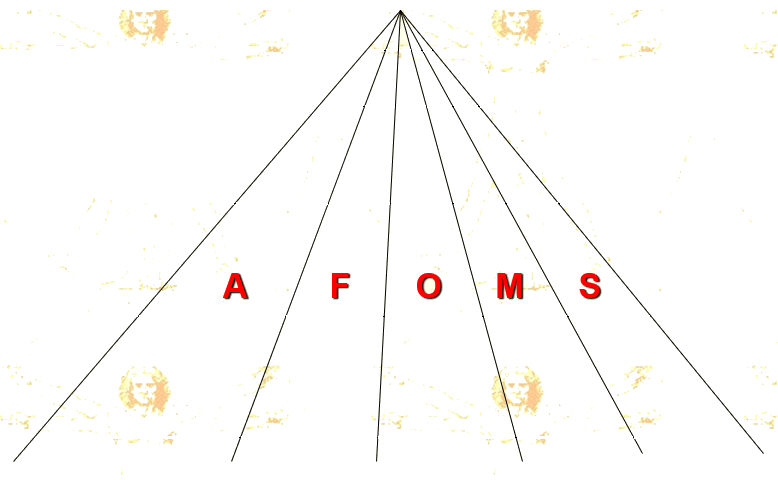 And, voilą, Functions were invented!
And, voilą, Functions were invented!
The principle of "division" and "fragmentation", conceived by Smith for the Shop Floor, now had been transplanted upstairs, touching the very Organisational Structure of an Industrial concern.....
Does it ring a bell?
Does it remind of something still alive today?
It does, indeed!
The rationalisation of the "upper floors" (the Management structure) went further on:
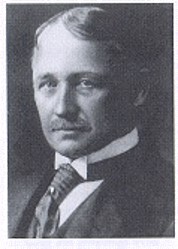 Frederick Taylor, Engineer and Consultant, had already created his "Scientific System" (also known as "Taylorism").
Frederick Taylor, Engineer and Consultant, had already created his "Scientific System" (also known as "Taylorism").
The Scientific System went full steam into the Management Structure organisation.
According to Taylor:
Due to market expansion and growing complexity in Manufacturing, Management had to be structured "scientifically" adopting healthy principles of PLANNING and CONTROL.
But in order to Plan and Control effectively, Management had to be organised in Levels, whereby each Level would plan the work to be carried out by the lower level and then control that the work had actually been done according to plans.
Levels - according to Taylor - would re-organise Management's role in a much better shape: therefore, above the "Shop Floor" Level, there would be a Frontline Level: in charge of fine-planning the Shop Floor works and control the validity of the output.
And above the Frontline Level, there would be a Supervisory Level.
And above a Middle-Management Level.
And above a High-Management Level.
And above the General Management Level.
With Managers at each Level planning and controlling the activities of the just-below Level - and each Level with a different horizon and style of intervention, but with all Levels aligned according to vision, policies, objectives, targets, etc. set at Top Management Level.
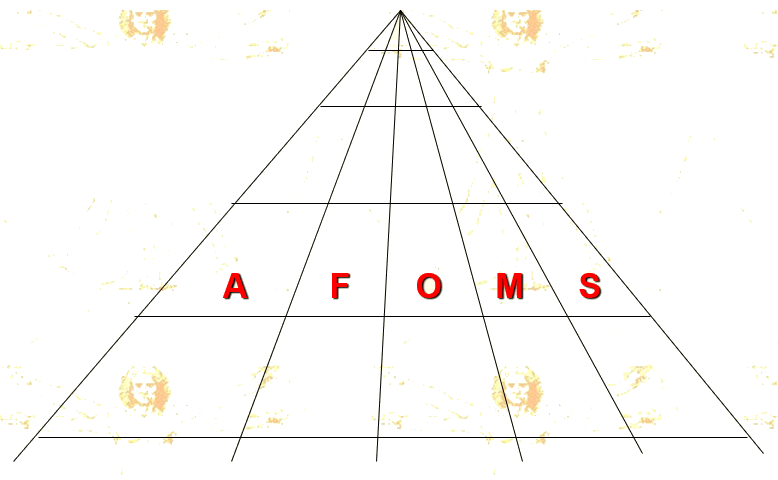 And, voilą, here is the Pyramid taking shape!
And, voilą, here is the Pyramid taking shape!
Does it ring a bell?
Does it remind of something still alive today?
It does, indeed!
But there is still an essential ingredient missing, essential to make the Scientific System gearbox turn and function smoothly and effectively.
The missing ingredient was suggested by the Railways!
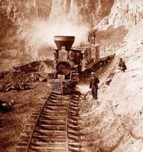 Do you remember the famous movie "Once upon the time in the West"?
Do you remember the famous movie "Once upon the time in the West"?
It was showing an American Railway being constructed (+-1860s) in the Far West.....
At those times, railways were single-track. Therefore the possibility of 2 trains colliding with each other was very high.....
In order to prevent accidents, the Railways introduced basic, golden RULES:
- such as signals (stop-go)
- and - most important - marshalling tracks at crucial points, so that a train could be parked in that track while another train, coming from the opposite direction, could pass.....
RULES were the secret!
And Engine Drivers main responsibility was to respect all Rules!
Surely, RULES are needed everywhere, including in an Industrial concern!
So - together with PLANNING and CONTROL - RULES became another essential ingredient of the Scientific System.
Which makes sense: Personnel, at all Levels, must adhere to and operate according to Rules....
In Industry in general, under the general term RULES, gradually were introduced:
- Policies
- Regulations
- Procedures
And Roles, Positions, Job Descriptions.... and Work Instructions, Standards, Specifications, Timetables, List of Duties..... and, and.....
Does it ring a bell?
Does it remind of something still alive today?
It does, indeed!
HIERARCHY had been invented!
And something else. As a by-product of the combination of LEVELS and RULES, a novel phenomenon originated and gradually grew and grew: BUREAUCRACY!
Bureaucracy, in simple terms, means that - in order for something to happen - a request must be made: that request (for a decision to be made, or for a green light, or.....) has to climb possibly several Levels, until the right switch is triggered and the request is fulfilled. Then, same routing down the various Levels up to reaching whoever originated that request - obviously according to certain Rules and Procedures as applicable to the case..... which may contribute considerably to slow down the wanted output......
Surely, neither Smith, nor Sloan, nor Taylor planned or wanted Bureaucracy to materialise.
But it was born, and grew over the next decades....
Although one might think that Bureaucracy was and is a phenomenon confined to/specific of the Public Sector, it has actually been and is still today well alive and kicking also in the Private Sector....
Finally, one last comment: over the last decades, Unions have greatly contributed to "maintain" (almost "freeze") the Smith/Sloan/Taylor Model. Why?
Because of Unions' passion for Roles, Positions, Job Descriptions, Careers Schemes, etc.etc.
the first industrial revolution
The above story describes the origins of Industry: yesterday's industry was born....
The FIRST INDUSTRIAL REVOLUTION, as it was called, can be schematised as follows:
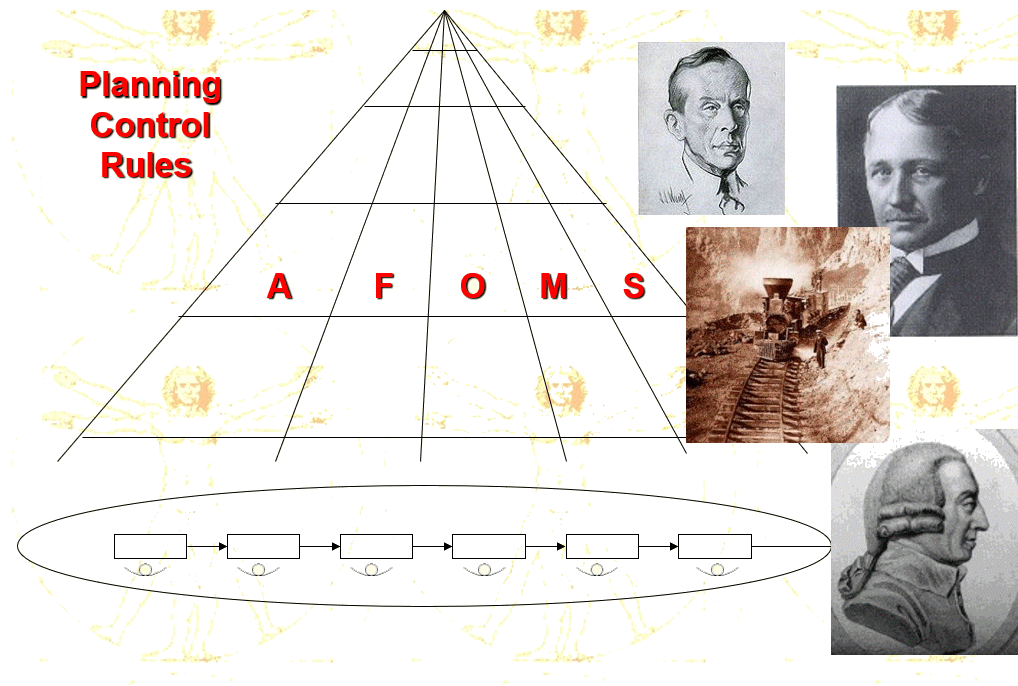
The above story also suggests the origins of Lean Management.
Because, not only yesterday's industry was born - also today's industry was born!!
One may ask: "why also today's industry"?
Well, let's be honest: apart from a number of touch-ups over almost one century, the way Industry, Businesses and, in general, most private and public Organisations are structured - still today - does not differ much from the Smith/Sloan/Taylor model!
Still today, Division of Labour, Functions, Management Levels, Planning, Control, Rules, Procedures, etc. etc. are there!
Fragmented Processes are still there!
And Bureaucracy is still there!!!
One may also ask: "and so, what is wrong with this model"?
No, not much wrong, for the time being..... for the time being, let's just say that this model is rather dated...... (to say the least).
It was conceived over 2 centuries ago - perfected in the last century - to work well in the last century!
And it has worked very well!! Especially after the Second World War.... and it had its glorious time in the '60s and the '70s (the era of mass production.....).
But it started showing some deficiencies already during the '80s.... more in the '90s....
And in the new millennium? Big question mark.
Lean Management originates from a deep analysis of the First Industrial Revolution Model, highlighting all its deficiencies first, then coming to the rescue (see below)!
the deficiencies of the Smith/Sloan/Taylor model
THE LAWN MOWER
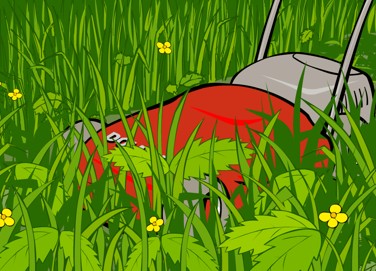 In all my Lean training courses, I make the example of the Lawn Mower. The story:
In all my Lean training courses, I make the example of the Lawn Mower. The story:
So, there has been heavy rains (climate change, tropicalization.....), and the lawn in the garden needs a solid mowing. If you are a rich man, you have a gardener who will take care of the mowing task.... but if you are an ordinary man in the street, you will have to do the mowing yourself - not your wife, not your kids, but you, the man in the house.....
When? Not during the week, because you work.....
Not on Sunday, family day.....
Not on Saturday morning, shopping with wife.....
So, what is left? Saturday afternoon!
But on Saturday afternoon there is cricket (or football, or tennis.... whatever your favourite sport is) on TV!
So, if the mowing must be done, it must be done early Saturday afternoon, and quick! Because cricket starts just now.....
So, you fetch the lawn mower (petrol engine driven), start it, and.... GO! Go as fast as possible, it's late already!
So you push the lawn mower at full speed through the thick, tall lawn.... BUT: if you push it too fast, the engine will stall! So, pull it back, let the engine breathe and rev-up again, and then push again like mad!
But the poor engine will stall again: it cannot cope at fast speed..... Why?
Because there is a limitation to the speed at which the lawn mower can advance forward and mow the loan properly: the limitation is given by the HP of the engine! More than so much it cannot do!
And I keep saying:
A "Traditional Enterprise" is like a Lawn Mower: more than so much it cannot do! In terms of output, results, effectiveness.....
Because also a "traditional" Enterprise (or Organisation) has a limitation! The limitation is imposed by the features of its Organisational Structure: the way it is conceived, the way it can act, its overall "capacity", etc. etc.
That is its DNA! Equivalent to the Horse Powers of a Petrol Engine.
Over many decades we kept discovering the "limitations" (or deficiencies) of Organisations built and structured around the Smith/Sloan/Taylor Model: frequently or regularly, the Organisation was "stalling", it wouldn't deliver the desired output and results, it could not run smoothly, there was "hiccup" processing, and the like.
And what have we done?
We have kept increasing the Organisation's HPs, in the hope it would perform better.....
How in practice?
Perhaps another Function? Or another Department? Or more Personnel? Or more qualified Personnel? Or, or.....
Or a new Position? Or new Roles (Assistant, Executive, Executive Secretary, Deputy, Chief.....)?
Or more Planning (long-term, yearly, monthly, weekly, daily, hourly..... fine Scheduling.....)?
Or more Control (strict Quality Control, Statistical Quality Control, Quality Assurance methodologies, ISO 9000.......)?
Or more Rules (more Procedures, detailed Procedures, stricter Procedures, more Work Instructions, Check-Lists.....)?
Or more Technology (more Machinery, more powerful Equipment, better Tooling, powerful IT Systems, MRP, MRPII, ERP.......)?
Or more initiatives/actions on Human Resources (Motivational Speeches, Motivational Techniques, MBO, MOBOII, Team Work, Team Building, Self-Directed Work Groups.......)?
The list of initiatives undertaken in order to revitalise an engine that was stalling could be endless. And yet, decades after decades, the "engine" shows some stalling..... the DNA doesn't seem to be adequate.....
And so, since the Climate Change and Tropicalization bring more rain and the lawn grows thicker and taller, the Lawn Mower Engine HPs should be increased indefinitely.
Likewise, since the World Change keeps increasing more rapidly and almost exponentially, the Organisation/Enterprise DNA is never adequate and should be revised and touched-up indefinitely.
BUT: it's just a matter of touching-up? Of tuning, of revising? Or has it become a matter of a comprehensive reviewing, starting from square one again??
About THE "SYSTEM"
There is a word widely used, often abused: the word system. You can hear it very often: at a bank, or at an Insurance Company branch, or at a Travel Agent, or at an Info Centre..... ('.... sorry, Sir, today the "System" is a bit "slow", it takes time....... - or..... the "System" is "down", it will take a bit to reset.....').
Generally, the Bank or Insurance Branch officer making such statement has a very relaxed attitude - meaning "...excuse me, Sir, it's not my fault..... it's the System.......".
Yes: the System is slow or the System is down. It happens, often.
Here we are however referring to an IT System.
But something very similar happens in most Organisations/Enterprises, and rather often: the System is slow or the System is down.
It is the Organisational System that is "slow" or is "down".....
Why?
For one main reason: "a System Output cannot exceed the limitations imposed by the System itself"!!
Like to say: "do not expect results greater than what the System allows!
This is a well confirmed and well verified truth, seen in Industry for decades, but never analysed nor investigated to deep extents.
The first, serious attempt has been made - very successfully - by Lean methodologies (see below).
But before describing the Lean analysis of and approach to "Traditional" Systems' deficiencies, let's extract another very important truth regarding the System itself:
"Personnel Performance cannot exceed the limitations imposed by the System!"
This statement, although well understandable, requires a few explanations:
- Rules, Control, Procedures, Job Descriptions, and the like, obviously put somehow a limit to the results people can produce: in terms of Output, Time, Quality, etc.
- actually, Control (especially Quality Control) may have the detrimental - even if unwanted - effect of People lack of commitment to Quality, to goodness of own work, to pride for own work, etc. (".....why should I care too much? If any problem, it will be up to the Quality Controller to reveal it.......")
- Hierarchy does not contribute to People Motivation
- Nor do all other typical parameters of the "traditional" model: Levels, Rules, Control.....
And finally,
About the LABOUR DIVISION principle
Smith's concept of Labour Division was very right and very pertinent for the times in which it was conceived (and several decades more.....).
It was right for the culture, the level of education and the approach to work of people of last century, possibly until the '70s.....
It was also very right and valid in an era of unsaturated market, of mass production, of limited competitivity....
But after the World changed it rapidly became obsolete.....
Let's deep-analyse with Lean spectacles what happened and still happens in a Shop Floor organised under the Labour Division principle:
Firstly: the concept of high efficiency at each processing station (manned by one individual).
No doubt, a repetitive, simple activity backed by the right tooling/equipment can be extremely efficient.
However it carries a side-effect that Smith did not consider at all: the negative impact on people and their spirit/motivation, in terms of frustration, stress, boredom, lack of interest for work, distraction........
Which, when they reach certain levels, may cause errors, mistakes, poor quality, mishaps....
And, no wonder, gave origin to the famous TGIF - Thanks God Is Friday "motto".....
Surely, Smith did not think of that. But nowadays (actually from already a few decades), this side-effect is well known.
And let's analyse further. Let's see what happens around and in-between processing stations:

Never mind a tailor pins factory, let's consider any "traditional" manufacturing Shop Floor organised according to Division of Labour principles.
Let's consider a real factory. A "traditional" factory is generally laid-out job-shop style, i.e. there is (for instance) a Store, a Machining Department, a Welding Department, a Pre-Assembly Department, a Final Assembly Department, a Packaging Department, and so on..... - and each Department (or Job Area) is in a convenient location in the factory, with some spacing in between; although in each Department there are Single-Skill/Single-Function Processing Stations (as per Division of Labour principle).
This involves that each Processing Station must be fed with materials, components, consumables, ancillaries, etc. necessary for production - and also involves that the output of each Processing Station must "somehow" be "transported" to the next Processing Station.
-
Between one processing station and the next, we find: handling (off-loading previous processing station - loading next processing station; plus moving, lifting, lowering, placing, transporting) - and storage (materials, components, work-in-process, quasi-products.....), in the form of parking, palletizing, positioning.....
-
"Around" processing stations we also find: handling, storing, inspecting, supervising.....
-
In some processing stations (or just out of them) we find: inspecting, controlling, quality controlling, checking, counting.....
-
And in some processing stations we may find: errors, mistakes, producing defects, producing rejects, separating defects and rejects from good product......
-
As a consequence, around processing stations, we may find: dealing with defects and rejects, assessing causes of defectiveness, doing the necessary reporting.....
The list could be very, very long.....
Surely, Smith did not even think of such consequences, and many Manufacturers - although noticed these "extra" activities correlated with a fragmented type of processing - simply lived with them for decades, considering them "normal" work activities.....
Even worse, many manufacturing managers, in a "raptus" of Taylorism, perfected to extremes those kind of "extra" activities: so they invented the Internal Transport Department, the Materials Feeding Department, the Quality Control Department...... and created titles such as handler, fork-lift driver, crane operator, cartonizer, palletizer..... and inspector, supervisor, foreman, controller (quality - production)..... with detailed job descriptions for everyone....
After all, until the World changed, Clients were paying for all those "extra" activities!
Does it ring a bell?
Does it remind of something still alive today?
It does, indeed!
FRAGMENTED PROCESSING
And let's also have a look at the upper floors: at the Pyramid and its contents.
Because also within the various Functions and Levels we can find fragmented processes!
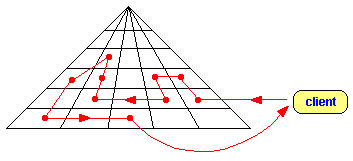 One simple example: a Client's request (a query - additional information - a commercial dispute - a complaint - a technical question - etc.), after landing at destination, may need to be "processed" with the intervention of various officers/employees in different Functions and at various Levels, before the necessary "output" is generated and transmitted back to the Client....
One simple example: a Client's request (a query - additional information - a commercial dispute - a complaint - a technical question - etc.), after landing at destination, may need to be "processed" with the intervention of various officers/employees in different Functions and at various Levels, before the necessary "output" is generated and transmitted back to the Client....
Although this might be typical of "large" "traditional" Organisations, also in smaller, "traditional" Enterprises something similar takes place: a number of different persons, each handling and taking care of a "bit" of the entire process, get involved to "process" their "bit": with time delays, "transport" of information between processing stations, etc. etc.
After all, a Style is a style and the Smith/Taylor model creates that style!
But then the World changed.
And Monster Clients (more ») were no longer prepared to subsidise Manufactures affected by too high costs, related to those "extra" Shop Floor activities.
Nor were they prepared to deal with dysfunctions, delays, poor service, etc. caused by "fragmented processing" within the Organization's Structure.
Lean Methodologies finally came to the rescue!
Firstly: re-discovering and highlighting Value - then, discovering and highlighting Waste
VALUE
In my Lean training courses, I always ask participating delegates a simple question, requesting their anonymous answer within 1 minute, in writing. The question is:
"Which is the primary objective of your Organisation?"
Answers (statistics, over 10.000 delegates):
1) Make money (make profit, be financially sound, strong financial muscle, marketing leaders, generate sales......)
2) Be the leader in our field (excel in what we are doing, beat competitors, be the first in the classroom, improve continuously......)
3) Have a secure future (provide security for the future of our people, guarantee survival......)
......................
At the bottom of the statistics (no more than 5%):
Generate Value for our Clients
Strange, isn't it?
Because, after all, if we do not generate Value for our Clients and Satisfy them, how can we make money and profit? How can we be the leader in our field? How can we hope in a secure, guaranteed future?
At Organisation level:
The Client, and Value for the Client, and Clients Satisfaction should be the centre of our attention, should be our primary target.... shouldn't it?
And, at individual level:
Why do we work? What is work? The answer should be "we work to create wealth and value, for ourselves, for our family, for our Organisation, for our Clients, for our Community, for the Country, for the World.....". And working should primarily mean wealth and value generation.....
Strange enough, this primary concept of Work = Creating Wealth and Value has gone, somehow, lost in decades of "traditional industrialisation".....
Most people, still today, believe they work to earn wages/salary, to be secure for the future, or.... do I have any other choice?....
Strange, strange, strange....
Something has happened, something has polluted people minds, deviating their believes, attitudes, behaviours.....
Confusion in this regard is enormous!
For the past 20+ years I have visited hundreds of Enterprises, all sectors, private and public.
I have a number of favourite questions I like to ask personnel at all levels. One of them is the following:
"So, you drive to work every weekday, which may take some time: if you live in a small town, perhaps only 10 minutes - if you live in certain areas of Cape Town, at least half an hour - if you live in Beirut, it will easily take you 1 hour - if you live in Istanbul, the trip will easily take 2 hours - and if you live in Mumbai, most probably you won't make it in less than 3 hours....
Never mind where do you live, it will take you some time to get to work.
Now, what do you do while you drive?
For instance, you may listen to the news or some music.... or, if you are a boy, watch the girls in nearby cars stuck at a traffic light.... (or, if you are a girl, watch the boys in nearby cars stuck at a traffic light)..... or, mind your own business and just drive..... OR
OR, you may think aloud: what am I going to do today at work, in order to produce Value for my Clients?"
Well, when I tell this little story and ask my question, people look at me like if I was a big gorilla just landed from Jupiter in the main square of centre of town......
"Value? what value? I am a clerk, a foreman, a storekeeper..... I push the machine buttons..... I write delivery notes.... I prepare invoices..... I have meetings all day long.... I control quality.... etc. etc. - what has value got to do with my work?"
And "Clients? what clients? I don't have clients.... the Sales Department deals with Clients....."
Strange, strange, strange....
Again, something has happened, something has polluted people minds, deviating their believes, attitudes, behaviours..... taking care of their own little church or vegetable garden, not even knowing that there are Clients out there, worse, not even considering that everyone, at whatever level and with whatever role, HAS Clients: not only external, but also internal..... and ALL Clients, external or internal, expect to receive Value from their (external or internal) Supplier/s! Isn't it?
LEAN re-discovers VALUE as starting point of a different industrial philosophy.
Value comes first, everything rotates around this primary concept.
Lean goes one step further, trying to understand and to highlight the causes of loss of the primary Value concept:
In the Smith/Sloan/Taylor Model:
- The main focus is internally. The attention is on internal organisation, from Shop Floor to Upper Levels.
At Shop Floor Level: tasks, single-function, localised efficiency, dedicated technology, and so on......
At Upper Levels: Functions, Roles, Levels, Hierarchy, Planning, Control, Rules, (internal) Policies, Procedures..... all structured 'scientifically'.... target: internal efficiency and internal perfection.
Very little attention (or none at all) to the "outside": the Market, Clients.....
-
Very little attention (or none at all) is paid to the concept of Value.
Actually: the Model was conceived to progress (progress??) from the status of Craftmanship to the status of Industry, in some way or another considering the Craftsman Style of Working as obsolete, inadequate, inefficient, non-organised.
In such progression (better: drastic transformation) the core principles on which and around which real Craftsmen used to (and still today's few Craftsmen) operate were somehow neglected - or overlooked - in any case: LOST!
How does a real Craftsman operate?
- Multi-skill/multi-abilities/multi-function (a real Craftsman works alone, without assistants, labourers, helpers....)
- handling himself A-Z the entire production process (the product being: furniture, wrought iron, ceramics, or whatever else)
- controlling (continuously) his own quality of workmanship: that must be "excellent"! Otherwise he would not be proud of his work!
- dealing commercially with his Clients and making his best to assure their satisfaction
- planning his own work and making sure to respect timetables and deadlines
- taking care also of his tooling/equipment maintenance, cleaning, etc.
- making his own administration and looking after his financial issues.....
But that is not only a Craftsman! That is a one-man-show Entrepreneur!!
No wonder the primary concept of Value has gone lost in decades of Industrialisation!
The bases for its generation have been removed!!
WASTE
Why LEAN is called lean?
Lean means "slim" - but also means "no-fat".
If you organise a Sunday meat barbecue with your family or friends, and you are a barbeque-fanatic, surely you will not choose "lean" meat. To the contrary, you will want your steaks, and lamb chops, and spare ribs, etc. with some fat. Why fat?
Because a bit of fat gives the "taste", gives the "flavour", gives the "aroma", and creates the nice "smell" typical of a good barbecue.....
So, fine for some fat in your barbecue meat!
But, when we look at work (work in industry), we don't like fat - at all. Why?
Because, in industry, fat = waste!
Which Waste in Industry? Waste, typical of Fragmented Processes: because transporting, moving, handling, storing, inspecting, supervising..... and inspecting, controlling, quality controlling, checking, counting..... and making errors and mistakes, producing defects, producing rejects, separating defects and rejects from good product, repairing...... and dealing with defects and rejects, assessing causes of defectiveness, doing the necessary reporting..... etc. etc. are nothing else - under the Lean angle of view - than pure, solid WASTE.
We may be gentlemen, and call all those activities "necessary, non-value-adding activities. OR, we may be Lean fanatics, and call them Waste!!
Two considerations:
1) Waste does not add any Value to the product we are producing or the service we are delivering!
Bearing in mind that Clients want Value, pure, abundant Value, Waste does not contribute at all to the purpose!
Worse! Waste contributes greatly to reduce the output Value to Clients!
Under the core Lean Discipline Value Adding Management (more ») angle of view we add Value to a Product (or Service) being processed when any activity under scrutiny contributes to the effect of having the output Product greater in Value than the Value of the raw materials used to produce that Product.
So for instance, in Manufacturing: Cutting Raw Materials, Machining them, Welding components together, Sandblasting, Painting, Assembling, Packaging, Cartonising ready for despatch..... ADD VALUE to the output Product - Value that Clients will recognise and will gladly pay for.....
But: transporting, moving, handling, storing, inspecting, supervising..... and inspecting, controlling, quality controlling, checking, counting..... and making errors and mistakes, producing defects, producing rejects, separating defects and rejects from good product, repairing...... and dealing with defects and rejects, assessing causes of defectiveness, doing the necessary reporting..... etc. etc. DO NOT ADD VALUE to the output Product!
Nor will Clients recognise any Value in those activities (even if they don't know about).
Yes, because if you produce and sell Mineral Water, one bottle of which should retail at say 1$, you cannot tell a Client: "...you see, dear Client, the selling price of this Mineral Water bottle is actually 3$.... because in our huge factory, with huge corridors delimited by yellow lines, there are huge fork-lits, transporting huge pallets of this water for Km and Km inside our factory, from Bottling to Quality Control, from QC to temporary storage, from temporary storage to Despatch, from Despatch to Loading Areas...... - and, we have so many fork lifts and fork lift drivers costing dear money, and an Internal Transport Manager with his Secretary and Assistants also costing dear money.... and we have to maintain those fork lifts, replace from time to time their batteries, so we have a Maintenance Department dedicated only to fork lift maintenance, with a Manager, foremen, supervisors and technicians, all costing dear money, and we need to repaint from time to time those yellow lines, so we have yellow lines painters, also costing dear money, and, and, and....."
If you try to tell a story like that to Clients, they will laugh themselves to death!!
"What? Fork list, drivers, corridors, pallets, km and Km, and maintenance and yellow paint....? But that's your problem, not my problem.... it's up to you to organise your huge factory the way you wish, but I am not prepared to overpay for a bottle of water..... thank you and Goodbye, I'll buy another brand...."
YES, because Monster Clients (more ») are no longer prepared to subsidise and support any Waste!!
In fact they don't even know what Waste is.....
However, their Monster brain has a super-duper computer that - in a ziff - can create a correlation between Product's Worth and Product Selling Price: if there is match, they will buy it - if there is a mismatch, they will simply go elsewhere....
After all: Clients and only Clients are the final judges of the Worthiness and Value of a Product!!!
Obviously, whatever said for a Product, applies in full (with the necessary conversions) to any type of Processing, such as a Service Process or an Office/Administrative Process: all we have to do is to substitute "materials" with "information" or "data"...... all typical Waste items are still there.....
2) Waste is "innocent": it hides!
When I conduct a Lean training course, generally I address my delegates with this story:
"So, you have been in this training room for well over a couple of hours..... have you paid attention to all details of this room? Have you noticed the furniture, your tables, your chairs, my table....? Have you noticed the colour of the walls? And those wall frames hanging there? And the ceiling details? And the lighting fittings details? And those curtains at the windows to prevent outdoor light coming in? And that Benjamin pot plant in that corner? And the floor on which you have been walking, with those carpet tiles creamy and pinkish? And the clock on that wall? Ahah, sure you have paid attention to the clock, checking how long was missing to get to coffee-break!! But have you paid attention to the white colour of the clock, its round shape, its black hours and minutes hands, its red seconds hand? Have you?
May be, maybe not - at least not in great, accurate detail..... why?
Because, simply, you have given it for granted.... after all, all training rooms are more less the same... and, moreover, why focusing on any detail? Not really necessary..... My brain and your brain are not really wired to focus on any detail of anything, any time.... or, life would become impossible......
So, by Furniture Effect, as I call it, you got fast used to this training room!!"
By Furniture Effect, in a similar fashion, we can get used to Waste. It's there, but you give it for granted..... and like no-one queries why an ornament or a piece of furniture is in a reception, in an hotel hall, at a doctor's rooms.... nobody will ever query why non-value-adding activities exist, are there, are present and alive, consume time, money, efforts and resources, and are still there forever and ever.....
Smith/Sloan/Taylor circle is closed.
Unless.....
Unless one wear Lean spectacles and starts "seeing" Waste!
For the past 20+ years, my Video Camera has been my primary training tool.
Very seldom I have run an "in-house" Lean training course without first going to the concerned Enterprise's premises and Video-Recording what happens there (shop floor plus upper floors).....
What happens there?
As you may imagine - in any "traditional" Enterprise - there is enormous Waste everywhere. When I see people (workers, supervisors, employees and managers) walking around and around, Km and Km every day, and talking, idling, searching, doing nothing, moving for no reason.... I know there is much more to discover!
Generally I spend one day video-recording and editing my video clips.
And the next day, in the training room, people can finally SEE: see themselves at the mirror, and discover things they couldn't even think of before! Waste to the sky: macro-Waste (handling, transporting, inspecting, long set-ups, piles of stock to the ceiling, etc.) and micro-Waste (flying-meeting in the corridors, people idling or watching the birds, or doing absolutely nothing.....).
Seeing is believing: Smith/Sloan/Taylor circle is over!
They have artificially fragmented a natural process (the Craftsman process), making mincemeat out of it. They had - as such - to create a glue or a thick mayonnaise to hold together the bits and pieces of a natural process.
Which glue?
Functions, Levels, Planning, Control, Rules..... - and Bureaucracy!
Bureaucracy is the real, thick Bonding Agent that - "scientifically" - makes all little bits and pieces still work together - somehow.... - within the box.
lean management: the approach
LEAN considers obsolete all principles of the First Industrial Revolution.
By re-discovering Value and declaring war to Waste, Lean Principles go actually back 200 years, to the Craftsman concept, extrapolating it in a shape suitable and fit to the know-how, culture, level of education, technology, etc. of the years 2000.
Under a new Philosophy, and by deploying all available Lean Disciplines, LEAN re-constructs natural, waste-less processes, geared to maximise output Value to the Client.
While simultaneously:
- giving back to Industry Personnel pride and dignity, usurped by decades of "traditionalism"
- giving them a chance to be again modern, real Craftsmen in their workshop, or Traders in their shop
- letting them become again Responsible Value Producers
|




